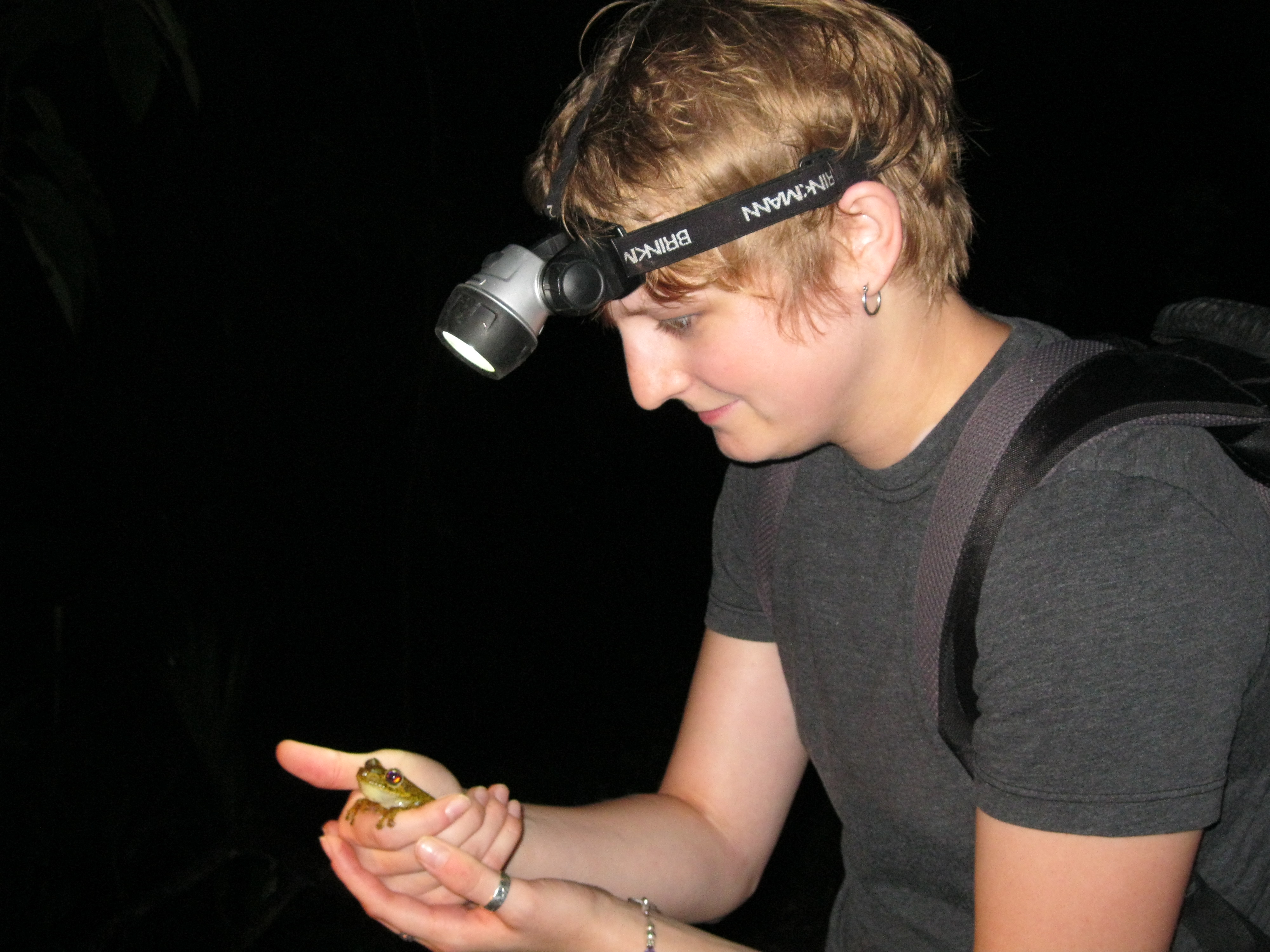The night quest—it’s not quite the childhood sport I remember. Sure, your heart is thumping rapidly and you–the frogger–have only moments to figure out the most effective way to wrap your hands around the frog without letting it escape. And when you finally do get your hands around him, you’re spellbound by the feeling of the animal perched there. But I had never actually caught frogs at night as a kid and in the first 24 hours here I’ve found myself on two nighttime frog hunts in the rainforest—one within hours of my plane touching down.
Hello, little frog. I flew 2,071 miles today just to meet you!
During Saturday night’s excursion, I held a red-eyed tree frog in my hand, watched as two tungara frogs in amplexus whipped up a froth of eggs, spotted more than one cane toad and got a good look at the hourglass pattern on the aptly named hourglass frog. Even before I laid eyes on a frog, though, I was swept up in the sounds of a richly diverse world. The chucking of the tungura frogs calling to mates, the chirping of the red-eyed tree frog as air pushes through its larynx. If these are the prima divas (and divos) in the opera of the natural world, then the insects are definitely the orchestra.

Although red-eyed tree frogs are quickly becoming one of my favorite species, this gladiator frog stole my heart on our second night of frogging.
We also ran into a Smithsonian Tropical Research Institute frog researcher in the forest. As I understand it, he was studying what combination of sounds and vibrations elicit a response—vocal and physical—from a potential mate. With his camera, we were able to see the world through infrared, including an unknowing red-eyed tree frog who looked eerily supernatural through this lens.
Last night’s excursion was a little different. Certainly more muddy and wet. My first spotting was of a pair of tungura frogs in amplexus. We collected them for a photo shoot before setting them free this morning. We also tracked down two red-eyed tree frogs by following their sound, standing under the tree that seemed to be making all the noise and peering up into the branches as two pairs of big red eyes peered back down at us. Perhaps my favorite discovery of the night was a gladiator frog the size of the palm of my hand. We didn’t collect this guy, but we did spend some time taking beauty shots of him. And oh how beautiful he was.
What is so markedly different about my hunt for frogs now, as an adult, is the feeling of gratitude and relief that I experience each time I see a frog in the wild. Relief that I am in the presence of a living, presumably healthy animal that doesn’t yet need an ark to survive the wave of chytrid in the way many of the highland species do. And relief that even though as an adult I am cursed with the ability to understand just how grave the situation is for amphibians, I am blessed to be part of a project that aims to ensure a biodiverse world for the next few generations of froggers looking for a good night quest.
-Lindsay Renick Mayer, Smithsonian’s National Zoo

